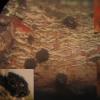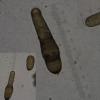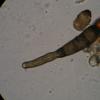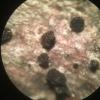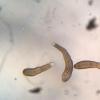
21-12-2025 09:32
Hello.A tiny ascomycete found embedded in wood in

21-12-2025 21:32
Pol DebaenstHello, Garden, Burgweg 19, Veurne, BelgiumOn 10/1

22-12-2025 23:38
Patrice TANCHAUDBonsoir, récolte sur un mur en pierre, apothéci

22-12-2025 00:47
Patrice TANCHAUDBonsoir, récolte à proximité du milieu dunaire

21-12-2025 21:40
Isabelle CharissouBonjour, j'aimerais connaitre les références de

20-12-2025 23:08
Patrice TANCHAUDBonsoir, récolte sur sol sablonneux dans l'arri�
Je ne sais pas trop si c'est opportun sur ce forum dédié aux ascos de vous demander votre avis à propos de ce que je crois être un hyphomycète (le cas échéant n'hésiter pas à me le dire).
Sur branchette sèche de tilia tombée, des périthèces (corrigez le terme si ce n'est pas cela) de 0.5 à 1.3 mm de diamètre, noirs à la coupe me donnant des conidies de 2 tailles : petites et grandes (jusqu'à 80µ). Je l'appellerais bien Corynespora olivacea. Votre avis ?
Alain

Alain

amitiés, :)
I think this paper will help you: https://www.ncbi.nlm.nih.gov/pmc/articles/PMC5473648/
Best wishes,
Gernot
Hi !
You resurrected an old message from 2007. I was taking my first steps in mycology, nostalgia...
Since then I have found it and the authors of this masterful paper have precisely sequenced and determined this Helminthosporium (ex. Corynespora). : http://www.ascofrance.com/search_harvest/4545
You can compare but be careful several species exist and determine them without more information than a morphological observation is risky.
All the best,
Alain
Yes, I resurrected your old message and it turned out to be quite helpful! I am not really 100% certain, but I think my collection is H. oligosporum. The substrate is Tilia, which is consistent with both H. oligosporum and H. tiliae. But comparing the two species, as described in Voglmayr and Jaklitsch, the differences that I am able to observe are the somewhat smaller conidiospores with fewer septa, and the stated range (widespread in Europe and North America for H. oligosporum, Europe only for H. tiliae). But as you mention there is a risk of an overconfident identification.
My data in case you are interested:
Conidia: (52-)59-105(-114) x 14-18µm; tapering at the distal end to 6-11µm; scar at the base of the conidia 4-8µm; (2-)4-12 septa.
Regards,
Ethan
